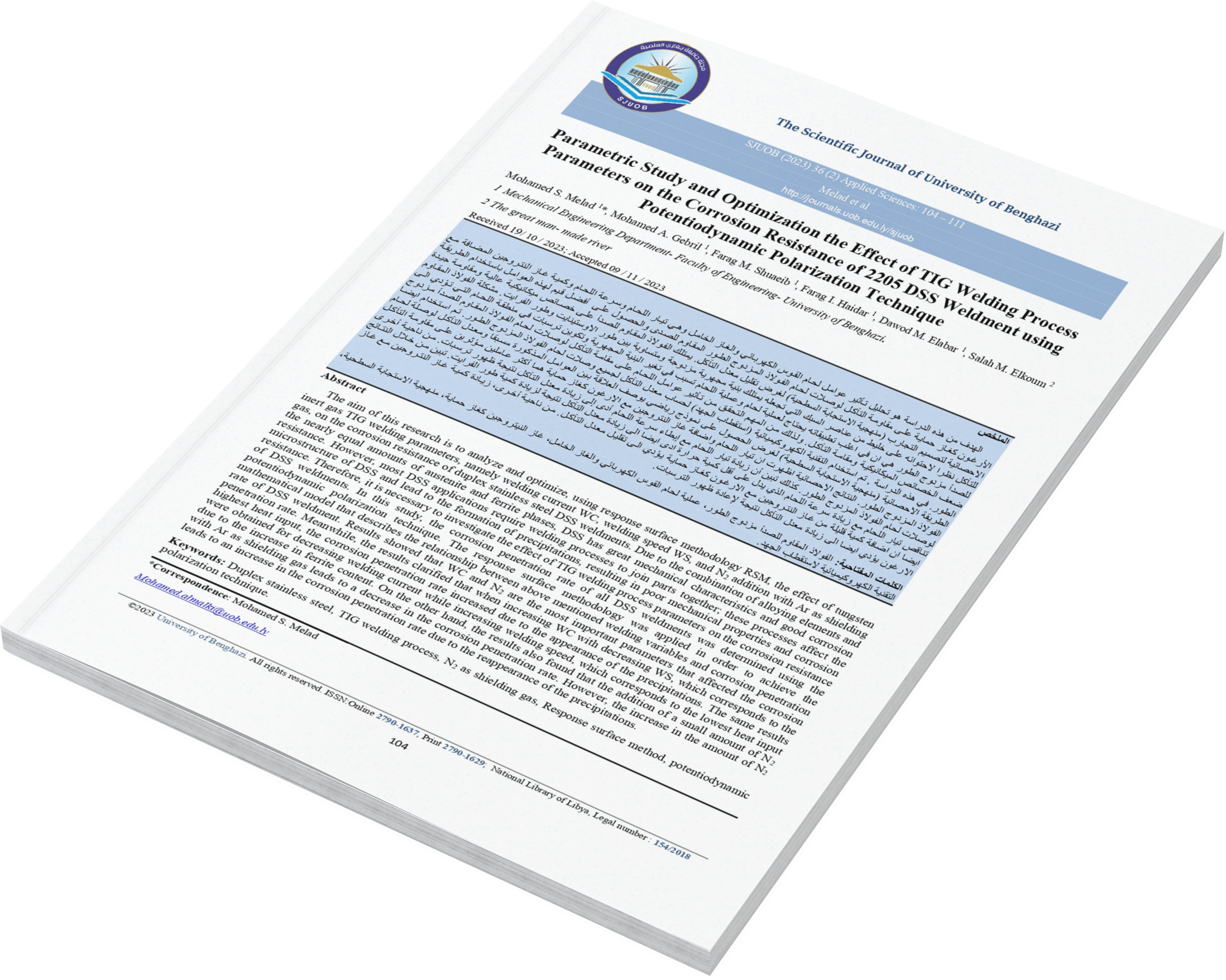Parametric Study and Optimization the Effect of TIG Welding Process Parameters on the Corrosion Resistance of 2205 DSS Weldment using Potentiodynamic Polarization Technique
DOI:
https://doi.org/10.37376/sjuob.v36i2.4296Keywords:
Duplex stainless steel, TIG welding process, N2 as shielding gas, Response surface method, potentiodynamic polarization techniqueAbstract
The aim of this research is to analyze and optimize, using response surface methodology RSM, the effect of tungsten inert gas TIG welding parameters, namely welding current WC, welding speed WS, and N2 addition with Ar as shielding gas, on the corrosion resistance of duplex stainless steel DSS weldments. Due to the combination of alloying elements and the nearly equal amounts of austenite and ferrite phases, DSS has great mechanical characteristics and good corrosion resistance. However, most DSS applications require welding processes to join parts together; these processes affect the microstructure of DSS and lead to the formation of precipitations, resulting in poor mechanical properties and corrosion resistance. Therefore, it is necessary to investigate the effect of TIG welding process parameters on the corrosion resistance of DSS weldments. In this study, the corrosion penetration rate of all DSS weldments was determined using the potentiodynamic polarization technique. The response surface methodology was applied in order to achieve the mathematical model that describes the relationship between above mentioned welding variables and corrosion penetration rate of DSS weldment. Results showed that WC and N2 are the most important parameters that affected the corrosion penetration rate. Meanwhile, the results clarified that when increasing WC with decreasing WS, which corresponds to the highest heat input, the corrosion penetration rate increased due to the appearance of the precipitations. The same results were obtained for decreasing welding current while increasing welding speed, which corresponds to the lowest heat input due to the increase in ferrite content. On the other hand, the results also found that the addition of a small amount of N2 with Ar as shielding gas leads to a decrease in the corrosion penetration rate. However, the increase in the amount of N2 leads to an increase in the corrosion penetration rate due to the reappearance of the precipitations.
Downloads

Downloads
Published
How to Cite
License
Copyright (c) 2023 The Scientific Journal of University of Benghazi

This work is licensed under a Creative Commons Attribution-NonCommercial-NoDerivatives 4.0 International License.


















